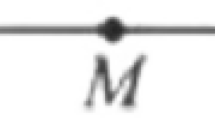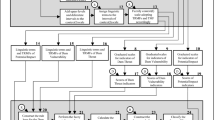Abstract
Dam construction is important for economic development. However, the safety risks posed by dangerous dams are unacceptable. The need for the consequence evaluation of dam breaks has been increasing to reduce all types of losses caused by dam breaks in downstream areas. However, research on this topic is relatively scarce, particularly in the field of social and environmental impact assessments. This study combined the analytic hierarchy process, variable fuzzy set, and an index system to overcome the limitations of traditional evaluation methods and the problem in which the obtained evaluation level cannot be located accurately. An integrated variable fuzzy evaluation model was proposed to evaluate the social and environmental impact of dam breaks. To explore and compare the presented method with other traditional methods, a case study of the Changlong Reservoir was conducted. The comparison results showed that the proposed method features accurate algorithms and a scientific evaluation process. It can convey the severity of social and environmental impact to a certain degree by using the eigenvector of level H, which can improve the accuracy of assessment results. Meanwhile, various factors in the object to be evaluated were comprehensively considered. Therefore, the proposed method can be applied to the social and environmental impact evaluation of dam breaks.


Similar content being viewed by others
References
Álvarez M, Puertas J, Peña E, Bermúdez M (2017) Two-dimensional dam-break flood analysis in data-scarce regions: the case study of Chipembe dam, Mozambique. Water 9:432
Banerjee A, Chakraborty T, Matsagar V (2018) Evaluation of possibilities in geothermal energy extraction from oceanic crust using offshore wind turbine monopiles. Renew Sustain Energy Rev 92:685–700
Chen SY, Guo Y (2005) Variable fuzzy sets and their application to comprehensive risk evaluation for flood-control engineering system. Advances in Science & Technology of Water Resources 5:153–162
Chen SY, Li M (2006) Assessment model of water resources reproducible ability based on variable fuzzy set theory. J Hydraul Eng 37:431–435 (in Chinese)
Fan Q, Tian Z, Wang W (2018) Study on risk assessment and early warning of flood-affected areas when a dam break occurs in a Mountain River. Water 10:1369. https://doi.org/10.3390/w10101369
Fan J, An C, Zhang X, Li X, Tan J (2019) Hazard assessment of glacial lake outburst floods in Southeast Tibet based on RS and GIS technologies. Int J Remote Sens 40:4955–4979. https://doi.org/10.1080/01431161.2019.1577578
Fang YH, Zheng XL, Peng H, Wang H, Xin J (2019) A new method of the relative membership degree calculation in variable fuzzy sets for water quality assessment. Ecol Indic 98:515–522. https://doi.org/10.1016/j.ecolind.2018.11.032
Fearnside PM (2016) Environmental and social impacts of hydroelectric dams in Brazilian Amazonia: implications for the aluminum industry. World Dev 77:48–65. https://doi.org/10.1016/j.worlddev.2015.08.015
Fu X, Gu CS, Su HZ, Qin XN (2018) Risk analysis of earth-rock dam failures based on fuzzy event tree method. International journal of environmental research and public health 15. https://doi.org/10.3390/ijerph15050886
Ge W, Li ZK, Liang RY, Li W, Cai YC (2017) Methodology for establishing risk criteria for dams in developing countries, case study of China. Water Resour Manag 31:4063–4074. https://doi.org/10.1007/s11269-017-1728-0
Guo EL, Zhang JQ, Ren XH, Zhang Q, Sun ZY (2014) Integrated risk assessment of flood disaster based on improved set pair analysis and the variable fuzzy set theory in Central Liaoning Province, China. Nat Hazards 74:947–965
Hai Z, Li QM (2016) A comprehensive evaluation model of power quality based on blind number and variable fuzzy sets theory. In: International Conference on Integrated Circuits & Microsystems. https://doi.org/10.1109/ICAM.2016.7813608
He XY, Sun DD, Huang JC (2008) Assessment on social and environmental impacts of dam break. Chinese Journal of Geotechnical Engineering 30:1752–1757 (in Chinese)
Huang SZ, Chang JX, Leng GY, Huang Q (2015) Integrated index for drought assessment based on variable fuzzy set theory: a case study in the Yellow River basin, China. J Hydrol 527:608–618. https://doi.org/10.1016/j.jhydrol.2015.05.032
Huang DJ, Yu ZB, Li YP, Han DW, Zhao LL, Chu Q (2016) Calculation method and application of loss of life caused by dam break in China. Nat Hazards 85:39–57. https://doi.org/10.1007/s11069-016-2557-9
Jiang C, Sheng JB, Zhou KF (2010) Eco-environmental impact assessment of small hydropower dam breakage. China rural water and hydropower:164-166 (in Chinese)
Judi DR, Mcpherson TN, Burian SJ (2015) Impacts of elevation data spatial resolution on two-dimensional dam break flood simulation and consequence assessment. Journal of Water Resources Planning & Management 140:194–200
Kolotzek C, Helbig C, Thorenz A, Reller A, Tuma A (2018) A company-oriented model for the assessment of raw material supply risks, environmental impact and social implications. J Clean Prod 176:566–580
Latrubesse EM, Arima EY, Dunne T, Park E, Baker VR, d’Horta FM, Wight C, Wittmann F, Zuanon J, Baker PA, Ribas CC, Norgaard RB, Filizola N, Ansar A, Flyvbjerg B, Stevaux JC (2017) Damming the rivers of the Amazon basin. Nature 546:363–369. https://doi.org/10.1038/nature22333
Li Q (2013) Fuzzy approach to analysis of flood risk based on variable fuzzy sets and improved information diffusion methods. Nat Hazards Earth Syst Sci 13:239–249. https://doi.org/10.5194/nhess-13-239-2013
Li JJ (2018) Assessment on social and environmental impact of medium and small-sized reservoir dam-break., Zhengzhou University (in Chinese)
Li Q, Zhou JZ, Liu DH, Jiang XW (2012) Research on flood risk analysis and evaluation method based on variable fuzzy sets and information diffusion. Saf Sci 50:1275–1283. https://doi.org/10.1016/j.ssci.2012.01.007
Li JZ, Tan SM, Wei ZZ, Chen FL, Feng P (2014) A new method of change point detection using variable fuzzy sets under environmental change. Water Resour Manag 28:5125–5138
Li ZK, Li W, Ge W (2018) Weight analysis of influencing factors of dam break risk consequences. Nat Hazards Earth Syst Sci 18:3355–3362. https://doi.org/10.5194/nhess-18-3355-2018
Li W, Li ZK, Ge W, Wu S (2019) Risk evaluation model of life loss caused by dam-break flood and its application. Water 11:1359. https://doi.org/10.3390/w11071359
Lyu ZJ, Chai JR, Xu ZG, Qin Y, Cao J (2019) A comprehensive review on reasons for tailings dam failures based on case history. Advances in Civil Engineering 2019:1–18. https://doi.org/10.1155/2019/4159306
Malekmohammadi B, Moghadam NT (2018) Application of Bayesian networks in a hierarchical structure for environmental risk assessment: a case study of the Gabric dam, Iran. Environmental Monitoring & Assessment 190:279
Morales-Torres A, Escuder-Bueno I, Serrano-Lombillo A, Castillo Rodríguez JT (2019) Dealing with epistemic uncertainty in risk-informed decision making for dam safety management. Reliability Engineering & System Safety 191:106562. https://doi.org/10.1016/j.ress.2019.106562
Paveglio TB, Brenkert-Smith H, Hall T, Smith AMS (2015) Understanding social impact from wildfires: advancing means for assessment. Int J Wildland Fire 24:212. https://doi.org/10.1071/wf14091
Peng XY (2013) Reinforcement design of the spillway of Changlong reservoir. Jiangxi Hydraulic Science & Technology 39:267-269+287 (in Chinese)
Peng M, Zhang LM (2012) Analysis of human risks due to dam-break floods—part 1: a new model based on Bayesian networks. Nat Hazards 64:903–933. https://doi.org/10.1007/s11069-012-0275-5
Peng M, Zhang LM (2013) Dynamic decision making for dam-break emergency management – part 2: application to Tangjiashan landslide dam failure. Nat Hazards Earth Syst Sci 13:439–454. https://doi.org/10.5194/nhess-13-439-2013
Peng Y, Chu JG, Xue ZC (2017) Basin flood control system risk evaluation based on variable sets. SCIENCE CHINA Technol Sci 60:153–165
Pereira RN, Vicente AA (2010) Environmental impact of novel thermal and non-thermal technologies in food processing. Food Res Int 43:1936–1943
Ribas JR, Arce ME, Sohler FA, Suárez-García A (2019) Multi-criteria risk assessment: case study of a large hydroelectric project. J Clean Prod 227:237–247. https://doi.org/10.1016/j.jclepro.2019.04.043
Saaty TL (1994) How to make a decision: the analytic hierarchy process. Eur J Oper Res 24:19–43
Serrano-Lombillo A, Escuder-Bueno I, de Membrillera-Ortuño MG, Altarejos-García L (2011) Methodology for the calculation of annualized incremental risks in systems of dams. Risk Anal 31:1000–1015
Shao ZZ, Ma ZJ, Sheu JB, Gao HO (2017) Evaluation of large-scale transnational high-speed railway construction priority in the belt and road region. Transportation Research Part E-logistics Logistics & Transportation Review 117:40–57. https://doi.org/10.1016/j.tre.2017.07.007
Sun WW, Li L (2010) Comprehensive model for assessing hazard consequences caused by dam failure based on principal component analysis. Journal of Yangtze River Scientific Research Institute 27:22–26 (in Chinese)
Vahedifard F, Aghakouchak A, Ragno E, Shahrokhabadi S, Mallakpour I (2017) Lessons from the Oroville dam. Science 355:1139
Wang RZ, Li L, Sheng JB (2006) On criterion of social and environmental risk of reservoir dams. Journal of Safety & Environment:8-11 (in Chinese)
Wu MM, Ge W, Li ZK, Wu ZN, Zhang HX, Li JJ, Pan YP (2019) Improved set pair analysis and its application to environmental impact evaluation of dam break. Water 11:821. https://doi.org/10.3390/w11040821
Xu SG, Liu YY (2014) Assessment for river health based on variable fuzzy set theory. Water Resources 41:218–224
Yan F, Liu L, Zhang Y, Chen MS, Chen N (2016) The research of dynamic variable fuzzy set assessment model in water quality evaluation. Water Resour Manag 30:63–78
Zadeh LA (1965) Fuzzy sets *. Inf Control 8:338–353
Zhang LM, Xu Y, Jia JS, Zhao C (2011) Diagnosis of embankment dam distresses using Bayesian networks. Part I. global-level characteristics based on a dam distress database. Can Geotech J 48:1630–1644
Zhou ZY, Wang XL, Sun RR, Ao XF, Sun XP, Song MR (2014) Study of the comprehensive risk analysis of dam-break flooding based on the numerical simulation of flood routing. Part II: model application and results. Nat Hazards 72:675–700. https://doi.org/10.1007/s11069-013-1029-8
Zou Q, Zhou JZ, Zhou C, Song LX, Guo J (2012) Comprehensive flood risk assessment based on set pair analysis-variable fuzzy sets model and fuzzy AHP. Stoch Env Res Risk A 27:525–546. https://doi.org/10.1007/s00477-012-0598-5
Acknowledgements
This paper received financial support from the National Natural Science Foundation of China (Grant no. 51579208, 51679197 and 51679193), the Natural Science Foundation of Shaanxi Province (Program 2017JZ013), and the Leadership Talent Project of Shaanxi Province High-Level Talents Special Support Program in Science and Technology Innovation (2017).
Author information
Authors and Affiliations
Contributions
Conceptualization: [Guanjie He], [Junrui Chai], [Yuan Qin], [Zengguang Xu], and [Shouyi Li]; methodology: [Guanjie He]; software: [Guanjie He]; validation: [Guanjie He]; formal analysis: [Guanjie He]; investigation: [Guanjie He] and [Junrui Chai]; resources: [Guanjie He] and [Shouyi Li]; data curation: [Guanjie He] and [Yuan Qin]; writing—original draft preparation: [Guanjie He]; writing—review and editing: [Guanjie He]; visualization: [Guanjie He]; supervision: [Junrui Chai] and [Zengguang Xu]; project administration: [Junrui Chai]; funding acquisition: [Junrui Chai], [Yuan Qin], [Zengguang Xu], and [Shouyi Li]. All authors have read and agreed to the published version of the manuscript.
Corresponding author
Ethics declarations
Conflict of Interest
The authors declare no conflict of interest.
Additional information
Publisher’s Note
Springer Nature remains neutral with regard to jurisdictional claims in published maps and institutional affiliations.
Highlights
• A comprehensive index for the social and environmental impact evaluation of dam breaks was established.
• A new coupled model was developed to improve the defects of weight calculation in traditional methods.
• The new method exhibited high efficiency and reliability in the social and environmental impact assessment of dam breaks.
Rights and permissions
About this article
Cite this article
He, G., Chai, J., Qin, Y. et al. Coupled Model of Variable Fuzzy Sets and the Analytic Hierarchy Process and its Application to the Social and Environmental Impact Evaluation of Dam Breaks. Water Resour Manage 34, 2677–2697 (2020). https://doi.org/10.1007/s11269-020-02556-x
Received:
Accepted:
Published:
Issue Date:
DOI: https://doi.org/10.1007/s11269-020-02556-x




